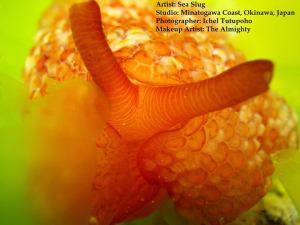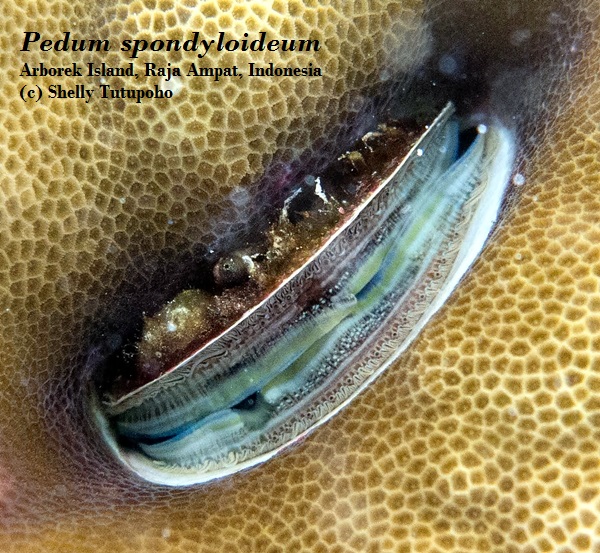
Mollusca
Thyca crystallina
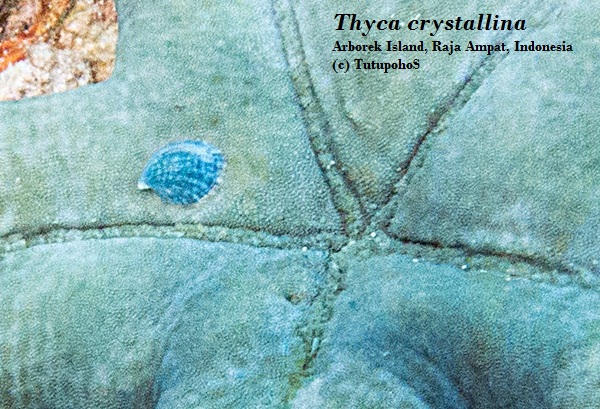
A parasitic gastropod, Thyca crystallina, found attached on the skin surface of the blue starfish, Linckia laevigata. Some sources said that this parasitism relationship is specific. Having blue coloration, this parasite well-camouflaged on the host. Lacking of the shrimp symbiont could be the factor causing this blue starfish infected by Thyca crystallina.
Phyllidia varicosa
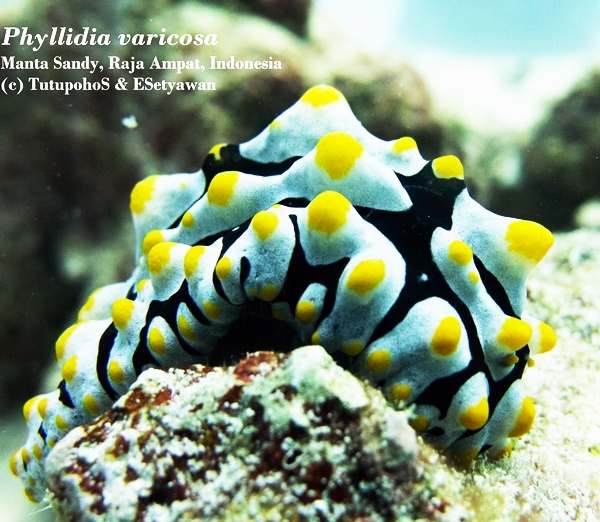
Phyllidia varicosa belongs to dorid group of nudibranchs. The retractile rhinophores is among their features. This individual was photographed at Manta Sandy, Raja Ampat (Indonesia) with about 100 mm in body length. They are easy to be recognized by possessing blue ridge and yellow tubercles.
Phyllidia ocellata
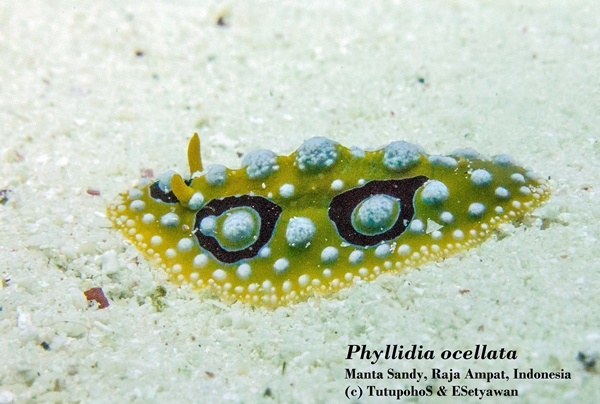
A dorid nudibranch, Phyllidia ocellata, was photographed at Manta Sandy, Raja Ampat (Indonesia) crawling on the sandy substrate. The coloration of this creature varies, but commonly dominated by yellow color with white tubercles spreading on the entire body. This sea slug posses a pair of yellow rhinophores which can be retracted. They are known feeding on sponges.
Phidiana indica
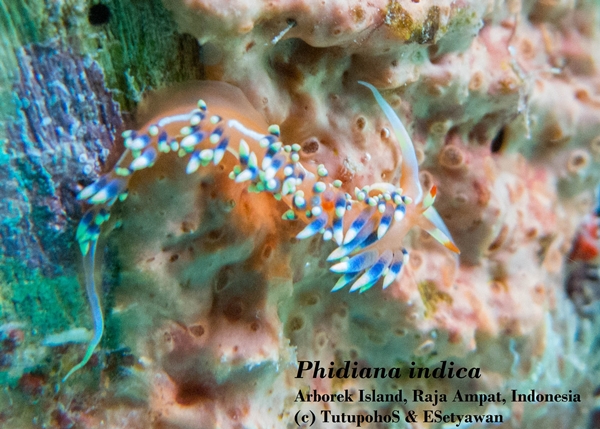
An aeolid nudibranch, Phidiana indica, was found at Arborek Island, Raja Ampat (Indonesia) being camouflaged with the bright sponge behind. It has flamboyant color combination. The body is bright orange with white line along each side. The tail is long and pointed like hair-structure. This small creature also posses white-tip cerrata with blue color on the base.
Flabellina exoptata
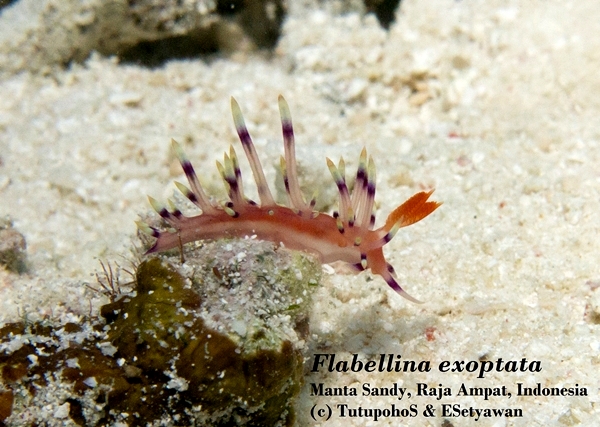
Flabellina exoptata belongs to Aeolid Nudibranchs. Exoptata itself means “much desired” as this species has very colorful body; orange, pink, yellow, purple, white. Individual on the picture was photographed at Manta Sandy, Raja Ampat (Indonesia) crawling on the white sand surface.
Sebadoris nubilosa
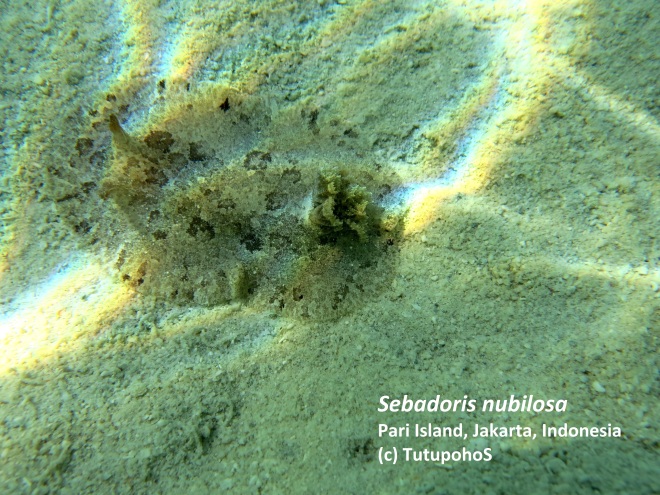
A doridid sea slug, Sebadoris nubilosa, was photographed in shallow water of Pari Island, Jakarta, Indonesia. It has soft mantle with pointed tubercles cover it. The color is light brown and some dark spots found on the entire body, which make it looks similar to the sand substrate.
Aplysia dactylomela
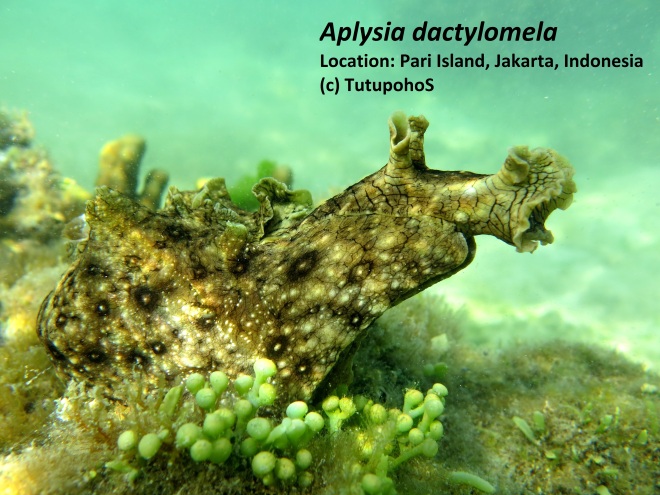
This sea hare was photographed at shallow water of Pari Island, Jakarta, Indonesia, with sandy substrate and patchy sea grass during high tide at noon. It has about 15 cm in body length. The black rings on its entire mantle is one of characteristics of this species. As the defense, they squirt purple ink when disturbed.
Phyllidiella nigra
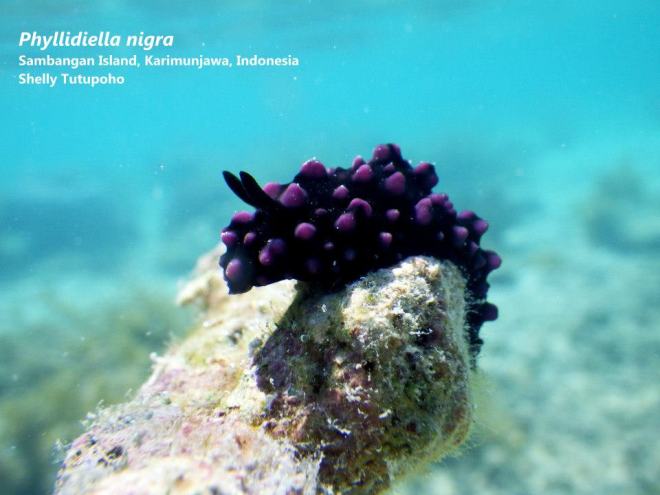
In sandy shore area of Sambangan Island, Karimunjawa (Indonesia), this sea slug was found among coral rubble. The black rhinophores (a pair of structures like antennae), black background of body coloration, and purple (sometimes pink) tubercles on the entire dorsal body are some important yet easy-to-distinguish features to recognize this species. Individual on the picture has about 25 mm of body length.
Pleurobranchus peroni
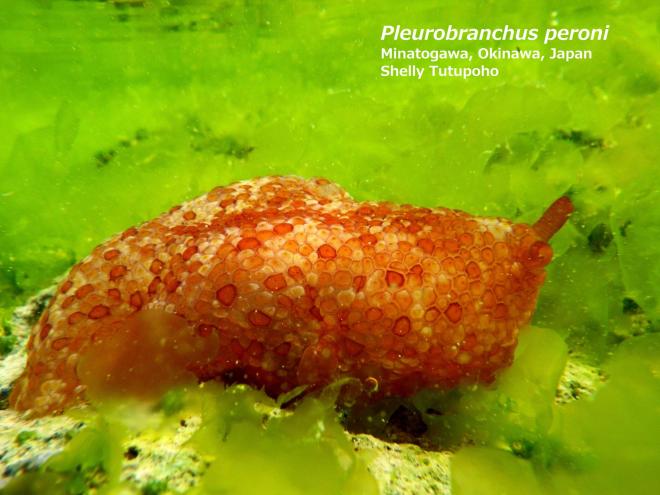
Belonging to group side-gill slug, this marine creature was found among the blooming macrolagae (Ulva sp.) in early spring at rocky intertidal area of Minatogawa Coast, Okinawa (Japan). Individual on the picture is about 70 mm in body length. The bright coloration makes them easy to spot underwater.
